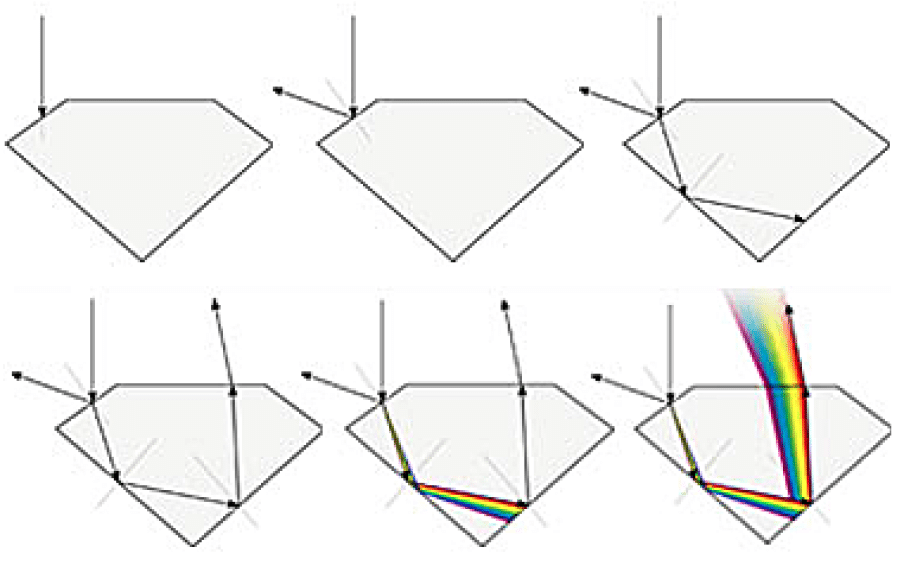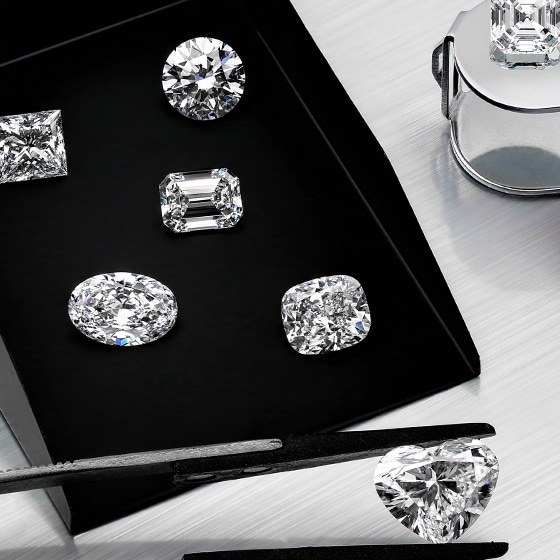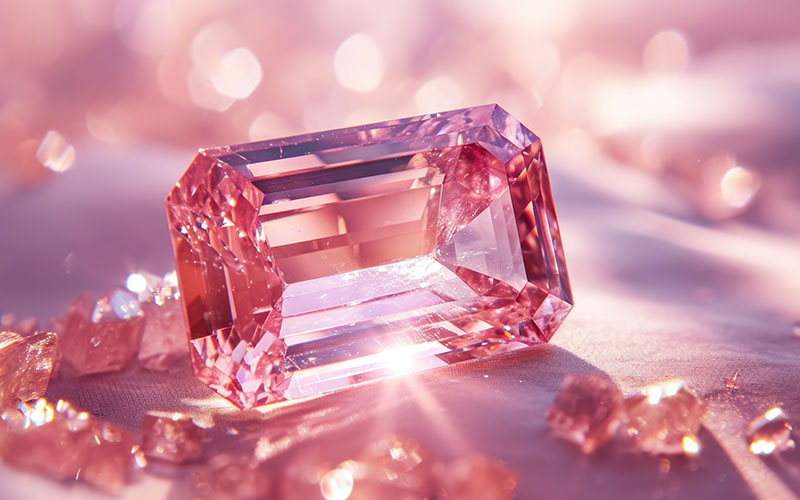While nature determined the color and clarity of a natural diamond, man is responsible for the cut quality which brings it to life. The planning, proportions, cutting precision, and details of the finish determine how brilliant, dispersive, and scintillating the diamond will be. If the cutting factors under man’s control are not optimized, the appearance of the diamond can be adversely affected. Diamond faceting has changed over time, particularly as lighting has evolved. There are many shapes and cutting styles, each with different visual properties. The most popular diamond in the age of modern electric lighting is the Round Brilliant.

When a ray of light touches the surface, part of it is reflected back. This is called external refraction. The rest of the ray penetrates the stone and moves through it. This is known as refraction. The part of the ray reflected back to the surface exits, broken into spectral colors in a prism-like effect. This is known as dispersion. All of these elements contribute to the appearance of a diamond.

Elements of diamond beauty can be described as brilliance (all light returning to the eye), dispersion or ‘fire’ (seen as white light is broken into spectral colors), contrast patterns (contrasting light and dark areas created by the viewer’s reflection) and scintillation or ‘sparkle’ (seen as the diamond, the light source or the observer move). These qualities combine to create the life of the diamond and the way it reacts to lighting and environment.




